The 4 (actually 5) levels of tool organization
Free time is not free. Free time comes with working efficiently, which minimizes the time needed to get the finished product you so desire. You could ensure your tools are all in the garage, suggesting they are technically all in one place. But nothing is more infuriating than spending five minutes wandering around the garage to find a tool you only need for 30 seconds. And then repeat it again for another misplaced item. It can literally drive a person mad.
On the other hand, there are people who genuinely believe organization is just a waste. Everyone works in their own ways, so we aren’t about to suggest anyone is wrong for keeping their tools how they please. But, with an interest in organization in mind, here are the four levels of tool storage you will likely encounter if you visit enough garages.
Level 0: I have one of those

You are elbow deep in a water pump swap at your friend’s garage when you realize you need a shallow 6-point socket on an 3″ extension. You friend looks at you and says “yeah, I’ve got one of those” and then starts picking up various items and projects on their workbench. Your automotive repair has now turned into a game of “I Spy: Garage Edition.”
We all get caught between projects from time to time, or something of high-importance rolls in and requires pausing something you were actively working on. We how these situations come to life. But if this is your modus operandi, perhaps it’s time to upgrade and quite literally get your poop in a group.
Level 1: It’s in the box somewhere
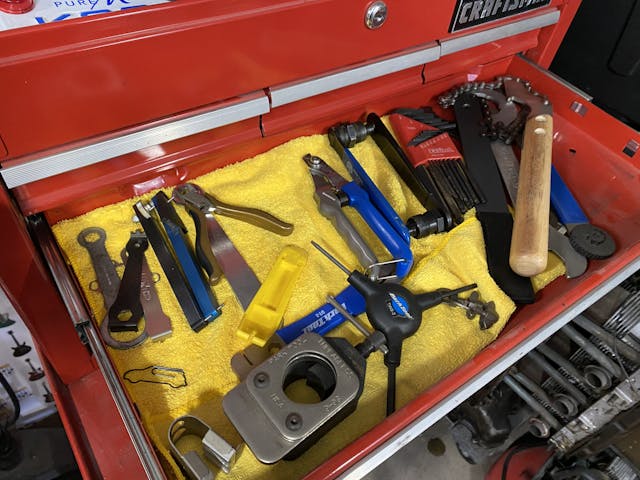
We have now advanced to the most basic level of tool organization: Having everything contained in one place. But the tools are loose and haphazardly mixed. Sockets and wrenches require picking up and turning to see exact sizing, as if denying that the two options of standard and metric exist. You are no longer walking about the garage searching for things, but still pulling drawers like a cabinet maker looking for that jig he knows he made back in 2011.
Not everyone needs to take out a second mortgage to have one of the tool trucks drop off the latest and greatest toolbox, but having one place for your tools is the best course of action if you own tools. Heck, most tool kits these days come in blow-molded packaging that can be downright annoying in some situations, but it undeniably keeps things together and halfway organized. The various ratchets, screwdrivers, saws, and hammers we accumulate with time last longer and work better when properly taken care of and not left in the dirt, or on the floor. (Or in the saltwater marsh that forms underneath anything I park during the winter.) Tools also work best when they are not lost. A tool in the hand is worth… five on the shelf?
Level 2: It’s in that drawer
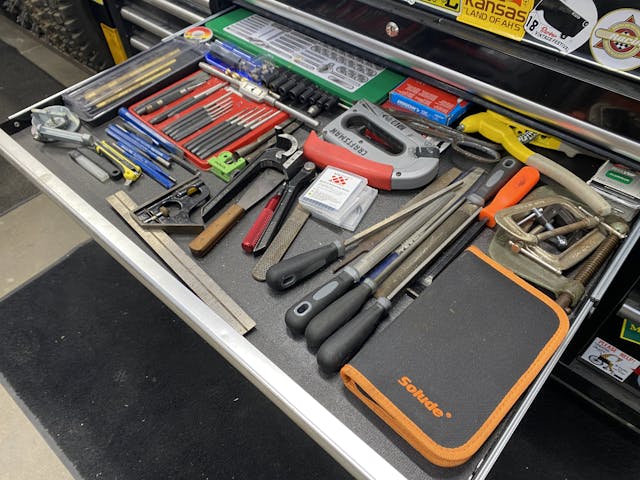
The chaos in now reduced to a smaller space! The drawers wear a label describing what’s inside, and those items are returned to the same place. You still have to poke around to find exactly what you need, and it might even be a little tougher since everything in the drawer is the same type. Need a half inch box wrench in a drawer full of box wrenches? That’s just annoying.
I suspect this is the level most DIY and at-home mechanics operate on, mostly because it is the easiest to maintain. Clean up only requires wiping a few things down and then tossing handfuls back in the prescribed drawer. The time spent finding something is saved by how easy it is to put back. If you value your time at zero or know your tools extremely well, this is a relatively acceptable way to operate.
Level 3: It’s on a rail, in an organizer, or otherwise sorted
To most, this is the level that is considered “basic organization.” The toolbox now uses dividers in its drawers, or various fixtures to attach like-minded tools together. This creates an environment that makes for quicker locating of tools while working on a project. This level of organization also makes it easier when working on something new, or a project with mixed fasteners: I’m looking at you, American OEMs that mix metric and SAE fasteners.
When sockets are mounted to a rail, you can grab the whole rail and take it to your workspace, instead of making multiple trips to get the right size for the task. The rail also ensures sockets will not roll away while performing automotive yoga under a dashboard. Nothing hurts like watching something roll (or fall just out of reach) while literally shoulder-deep working on something. But sockets on rails can’t roll.
Level 4: It’s right there, and I can tell immediately if it’s not
For neurotic wrench turners, there is the ultimate in organization: Custom cut foam. It’s commonly referred to as Kaizen foam, but that is like calling all nose-blowing tissue a Kleenex. This is a multi-layer foam that can be sliced into, then pulled out in sections to exactly fit various tools or parts. We think it might have jumped into garages from the camera and film world, because this foam is great for packing delicate items into travel cases.
Each layer is 1/8″ thick, so it is as simple as tracing the tool you want to store, setting the depth of your knife, cutting the shape (while ensuring you keep the knife vertical), and removing the now-released foam. Bingo: you now have a perfect pocket for cradling anything you can imagine. And as a bonus, most of these foams have one color on top and a different color in the middle layers, allowing you to sight-check if anything is missing.
The idea of tool organization is likely as old as tools themselves, which means the cost to keep your toolbox tidy has dropped over the years. Time is money, and your time is not free. Socket rails and organizers are things that we can say with 100% confidence are worth a trip to Harbor Freight.
So where do you fall in this hierarchy, and do you want to see more tips on keeping your box organized and ready for work? We may have a few tricks that are cheap or free that we could be convinced to share, but only if you promise to not be a level zero organizer. Don’t worry, we’ll take your word and won’t ask for proof.
***
Check out the Hagerty Media homepage so you don’t miss a single story, or better yet, bookmark it. To get our best stories delivered right to your inbox, subscribe to our newsletters.
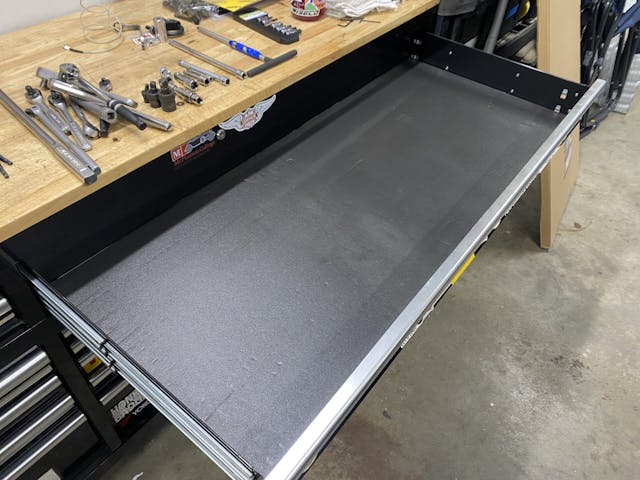
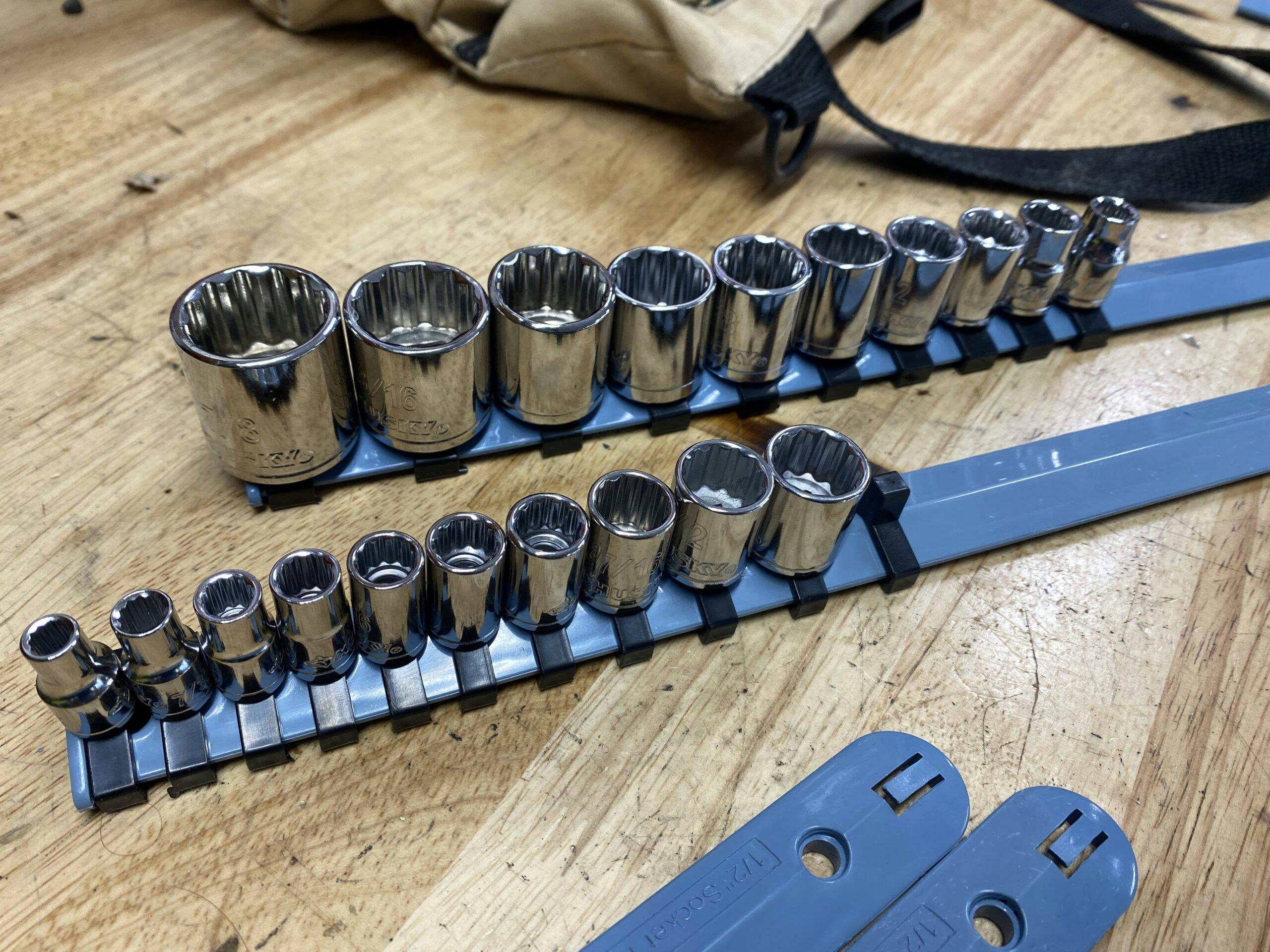
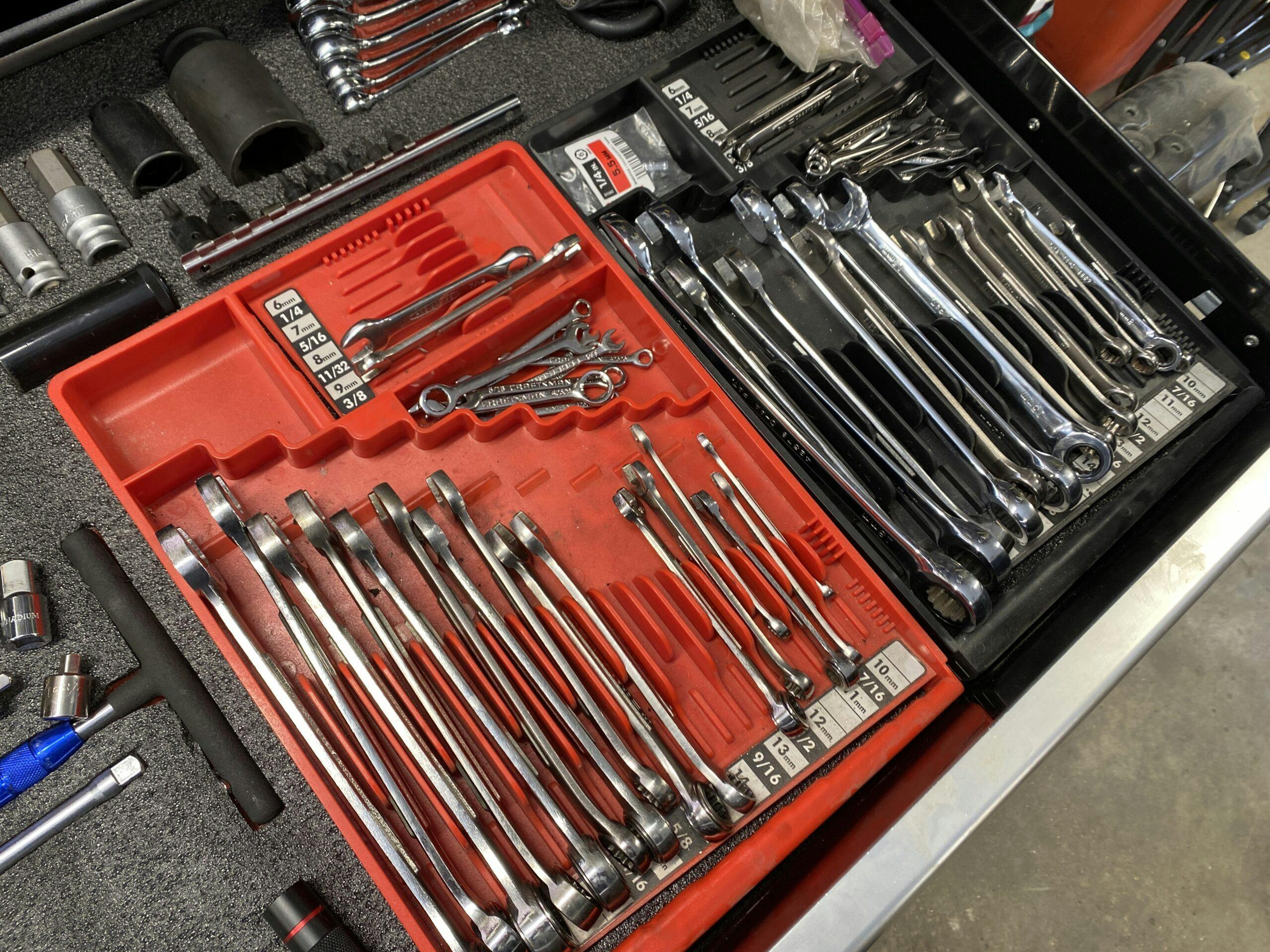
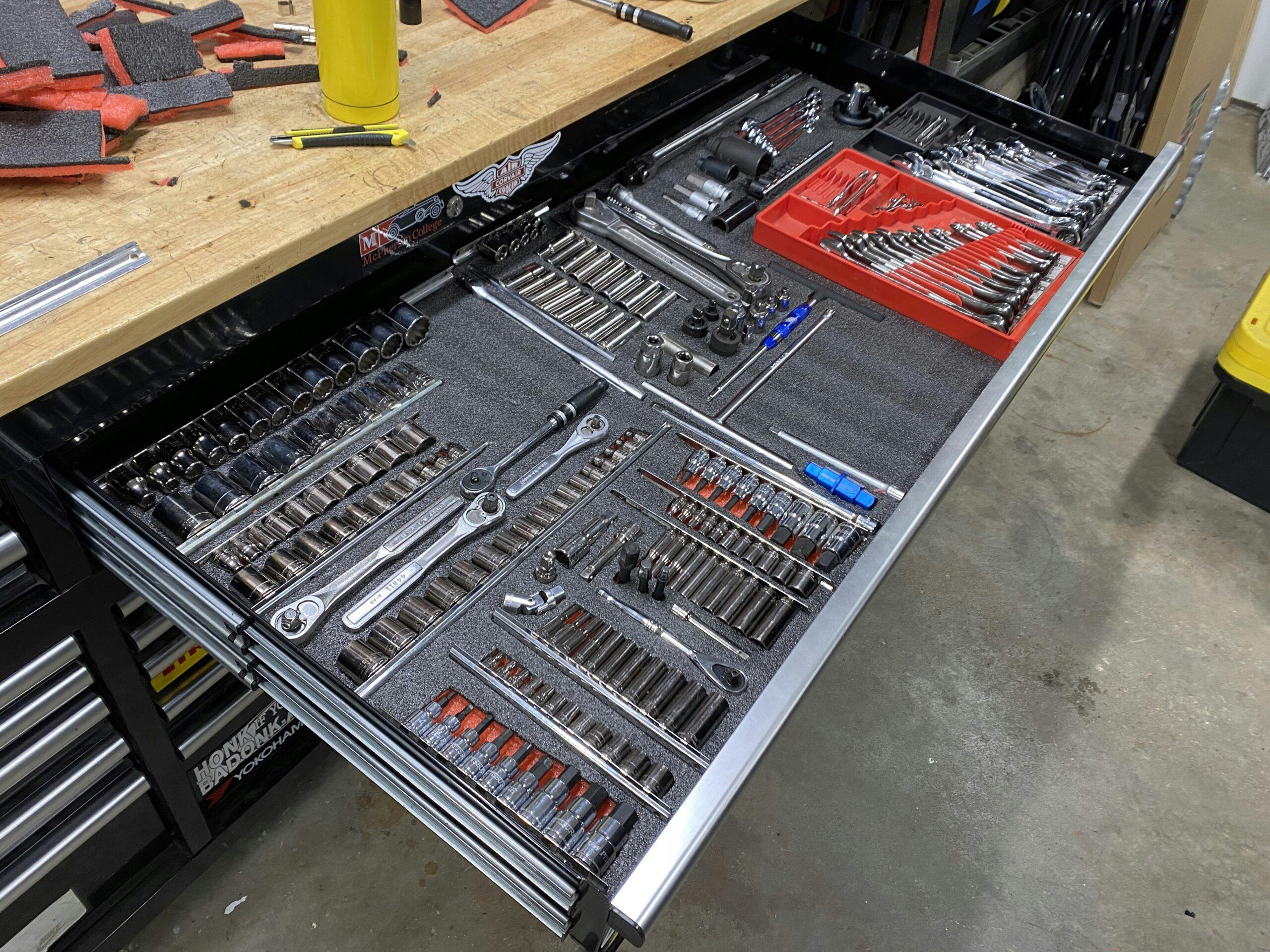



I have a shop 43 years and I get so angry when the mechanics don’t keep a level 3 or 4 box. Searching for tools is counterproductive BUT more important when the job is done and everything is put back in place you know immediately if a tool was left under the hood. Because of this I don’t lose tools.
Aircraft technicians aside, 30 years of performing and dispatching auto repair in shops have shown no correlation between toolbox organization and quality of finished repairs. I’ve always found this interesting though. Level 1-2 toolbox org techs tend toward high productivitity and quality IMO.
I’ve changed tactics as I’ve aged. I know what size(s) I need so I don’t need to take a socket set just a certain size or sizes. So I now keep everything in separate trays according to size. This is really awesome, just wish I’d figured t out 30 years ago. For instance, every 10mm whether it is a 1/4″ socket to 3/4, impact to regular, gear wrench or open ended, all in the same tray… Its wonderous how many 10mm sockets I found 😉
A 3 now but am always trying to be a 4 but I have not found a store bought system that I like enough and fits my exact needs. I am considering a 3D printer to make my own but then I would have another tool I would need to organize (wait, that’s not a bad thing!).
You can buy foam and cut it yourself
I have a problem with how to approach organization across multiple work areas. I have a small shop in the basement, a large shop with a lift, sometimes work in the garage, and also occasionally need to take tools along on remote trips. Clearly makes no sense to have duplicate tools – other than the basics – and how to decide what to store where is an issue I’ve not sorted very well. I often find myself running to one or the other places for that tool I need. Otherwise I’m level 2 to 3 pretty much. Sockets and wrenches in carriers is convenient, but it’s way easier to grab a tool roll for a road trip. No perfect solution I suppose.
For myself, working on Gas Turbines I keep a level 4 work box. It allows me the comfort of knowing everything is back where it should be and not have been misplaced awaiting for a disaster to happen. As some have mentioned earlier the time it takes to trace and cut the Kaizer foam out is time consuming, but worth it in the end. As far as my garage tool box, level three and need for a larger box that would be turned into a level 4.
I have 3 boxes so it depends on which box and which drawer. “Tools” (wrenches, sockets/ratchets, screwdrivers, etc) are a level 3 to 4 depending on the drawer in both the metric and SAE boxes. Box #3 is my “its in there somewhere” box. Drill bits and punches are pretty organized in the top drawer of that box. Next drawer is the “weird and strange tool” drawer. (big wire cutters, long handle dikes, big and little safety wire tools, etc). Next drawer is the “assorted electrical component crap” drawer (lights, fuses, common used connectors, spools of wire, etc). Bottom drawer is the “it will crowd the other drawers if I don’t put it somewhere else” drawer. All three boxes have bottom boxes for “big tools” such as impacts, 3/4 drive stuff, torque wrenches, etc. The key is, the very top of all three boxes (that “catch-all” area) looks like a bomb went off. As in you don’t even want to try and find anything in here kind of warning. Works well too. Keeps everyone out of my tools!
To borrow from earlier posts, I’m between a 2 and a 3 depending on the day and the drawer in the tool box. There is a reason. My father was a professional mechanic and I inherited his tools. The tools stay in the locations he left them and those are the same places the were kept when I was a kid. On countless occasions he would ask for a tool, I would start looking and without looking at me or the tool box, he would say, “Next drawer”.
Sometimes I think I search for a tool because.., I think most of you understand why.
I’m up to level 4. When I’m working on my truck and my wife is about, I can ask for that pair of needle nose, middle box, top drawer. PERFECT! No problem. (She’s carried the process on to her craft room too!)
In Vietnam, they call that a Nguyen-Nguyen situation!
B^)
hagerty: start a contest like we did in our office: who has the messiest desk.
guess who won: me! an empty desk.
title was: if you think a cluttered desk reflects a cluttered mind what does an empty desk tell you?
who has the best tool display? pictures and titles.
And addresses, and times you are not around!
;^)
Print labels and stick to magnetic adhesive tape. Perfect for labeling the 500 drawers on your growing toolboxes. Just move em around when you need.
I’m at level 3 and have the foam for level 4, but need the time to lay it out. At my age organization helps a failing memory. And it looks cool also.
GREAT IDEA! Thanks, if it’s OK, I would like to copy your idea! 😃
I’m definitely a level 4 (probably higher) but don’t cut foam because it will retain moisture. I have wrench and socket organizers that are labeled with size. One person made a comment that time is not money when retired. True but time is finite. With multiple cars to maintain and project builds I need to maximize my time. I’m OCD, anal retentive and wouldn’t change a thing.
I was a flat rate automotive mechanic for over 40 years. Organization is time and money. I’m somewhere between 3 and 4. If you’re wondering about the quality of the technician working on your vehicle, look at his toolbox and work area. If it’s a disaster, he is likely not that concerned about the quality of his work.
I couldn’t agree more. Mid task I’m probably a zero, task completed everything back in its drawer, I’m a strong 3. I too spent half my life as a flat rate Jaguar and Lotus tech. My current problem, that likely comes with age, is remembering where I set that dog bone 14mm 2 minutes ago mid brake job. Getting old is not for the weak of spirit!!
2 minutes….. sometimes 30 seconds is all it takes. Blame it on moving ahead 3 or 4 steps in my mind without finishing the current step , but then again it could be the years of experience showing up 🙂
Another dimension to explore is organizing tools conceptually or by general function if you are a jack of all trades. Metric tools are separated from SAE tools, metalworking tools are separated from woodworking tools. Measuring/layout tools, painting tools, gardening tools, chainsaws etc. are all separated from each other. Then there is the matter of consumables, the things that your tools wear out. Or the one wrench needed to change out that consumable bit. Should these be stored along with the cord or cordless device that consumes them?
I am level 0.5. I have a small tool box and it’s in there somewhere.